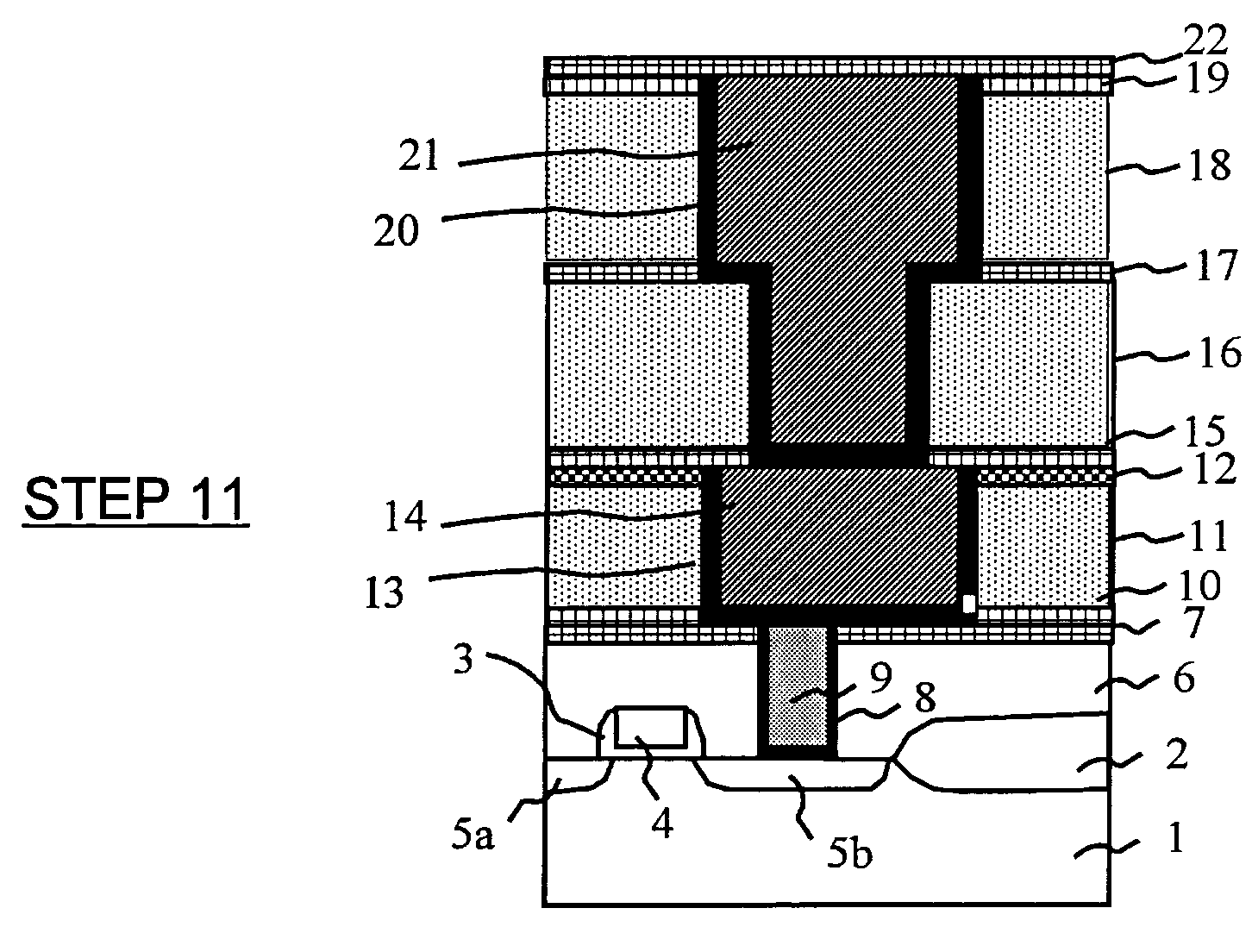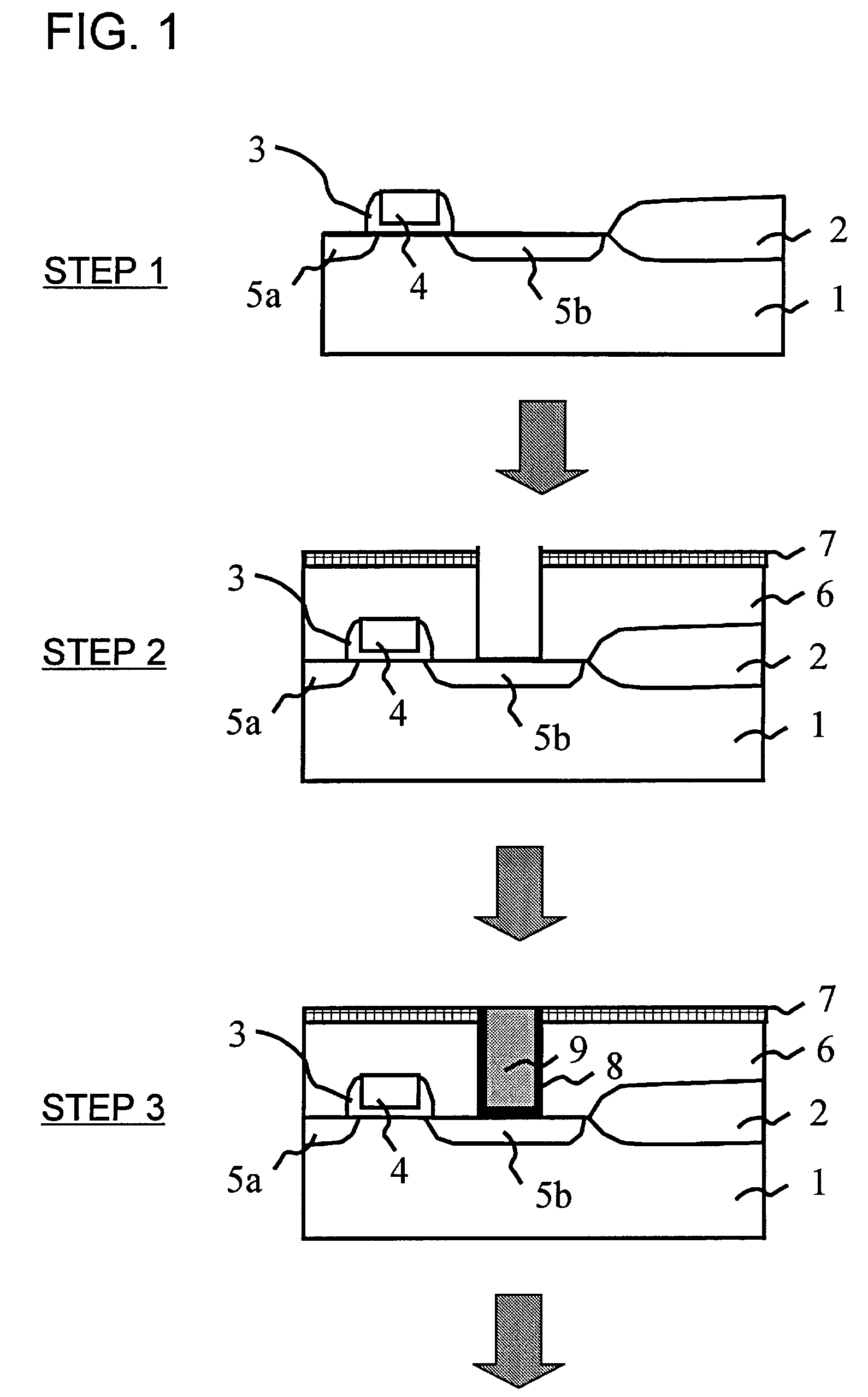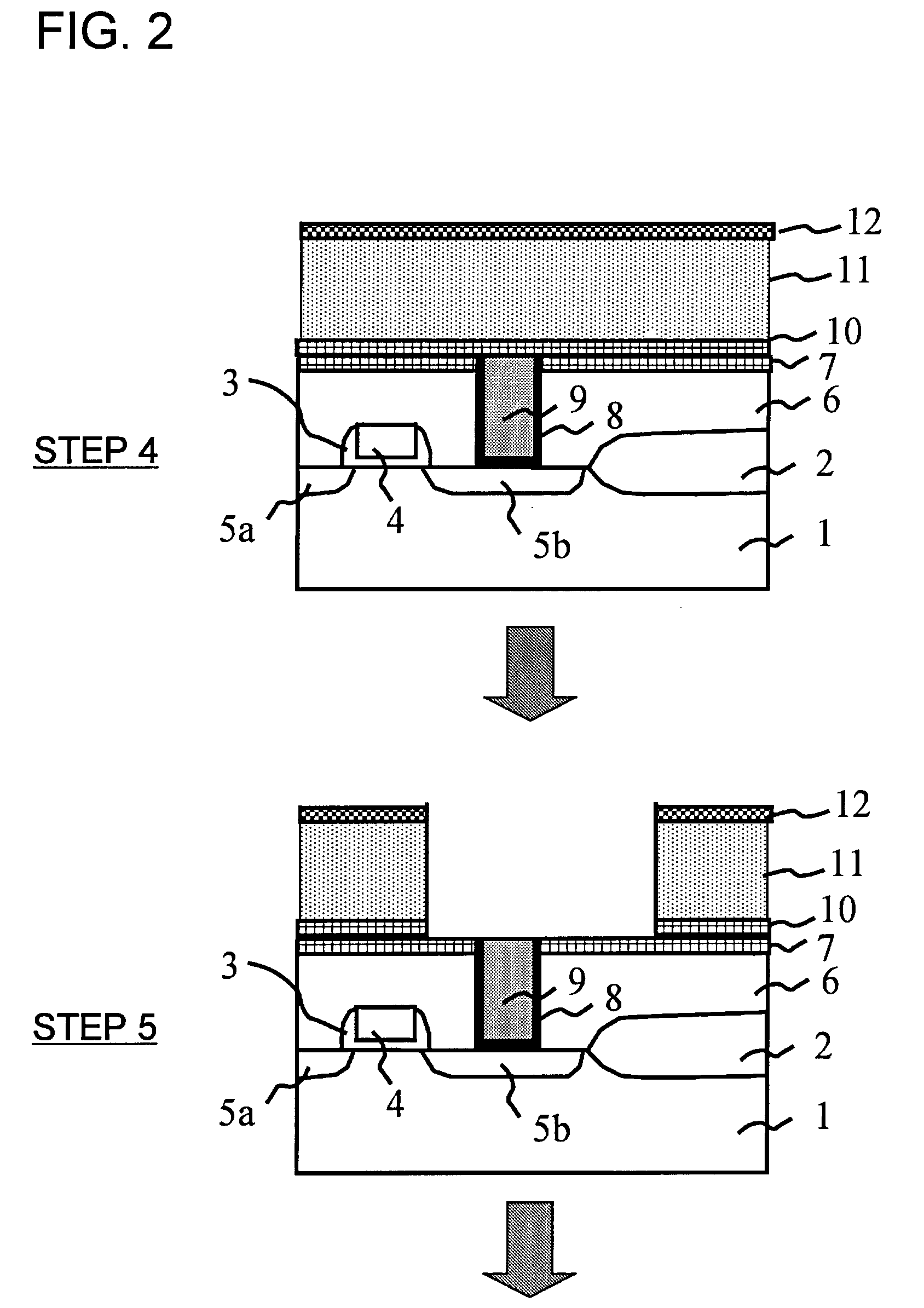Process for producing silicic coating, silicic coating and semiconductor device
a technology of silicic coating and semiconductor devices, applied in the direction of coatings, solid-state devices, basic electric elements, etc., can solve the problems of large influence of parasitic capacitance between lines, wire delay, and increased influence, and achieve easy production, increase the degree of crosslinking, and slow the effect of chemical reaction
- Summary
- Abstract
- Description
- Claims
- Application Information
AI Technical Summary
Benefits of technology
Problems solved by technology
Method used
Image
Examples
examples
[0078]Examples of the invention and comparative examples are described below.
examples 1 to 7
[0079](1) A porous silicon-containing dielectric film (an SiO2-like film containing primarily silicon and oxygen, and also containing carbon and hydrogen; Ceramate NCS, produced by JGC Catalysts and Chemicals, Ltd.) formed on a silicon substrate was produced.
[0080](2) Silane compound solutions prepared by mixing 0.1 mol of the respective silane compounds shown in Table 1 (corresponding to the “silane compound” of the invention) with 0.2 mol of methyl isobutyl ketone as the solvent were coated onto the porous silicic coating produced in (1) by spin coating at a spin rate of 2,000 rpm for a coating period of 30 seconds. The silicon substrate was then placed on a hot plate set at 100° C., and solvent drying was carried out for 1 minute.
[0081](3) Next, the porous silicon-containing dielectric films with the respective silicic coatings obtained in (2) were subjected to the light irradiation shown in Table 1. A high-pressure mercury-vapor lamp (wavelength, 200 to 600 nm) was used as the s...
examples 8 to 14
[0087](8) Referring to FIGS. 1 to 6, in Step 1, a silicon wafer 1 was isolated by an inter-device isolation film 2 and had formed thereon a transistor layer on which was formed a gate electrode having a source diffusion layer 5a, a drain diffusion layer 5b, and a sidewall dielectric film 3. In Step 2, an interlayer silicon dielectric 6 and a stopper film 7 were formed on the silicon wafer 1, and a contact hole for leading out an electrode was formed.
[0088]In Step 3, a TiN barrier metal film 8 was formed in the contact hole to a thickness of 50 nm by sputtering, following which a blanket of tungsten 9 was buried by mixing WF6 with hydrogen and reduction, then areas other than the via were removed by chemical mechanical polishing (CMP).
[0089]Next, in Step 4, a silane compound of the invention was coated, the solvent was removed by drying, then the applied coat was subjected to light irradiation to form a silicic coating 10 according to the present invention (silicic coatings according...
PUM
| Property | Measurement | Unit |
|---|---|---|
| density | aaaaa | aaaaa |
| temperature | aaaaa | aaaaa |
| wavelength | aaaaa | aaaaa |
Abstract
Description
Claims
Application Information
 Login to View More
Login to View More - R&D
- Intellectual Property
- Life Sciences
- Materials
- Tech Scout
- Unparalleled Data Quality
- Higher Quality Content
- 60% Fewer Hallucinations
Browse by: Latest US Patents, China's latest patents, Technical Efficacy Thesaurus, Application Domain, Technology Topic, Popular Technical Reports.
© 2025 PatSnap. All rights reserved.Legal|Privacy policy|Modern Slavery Act Transparency Statement|Sitemap|About US| Contact US: help@patsnap.com



